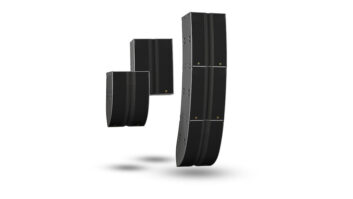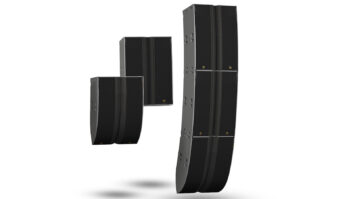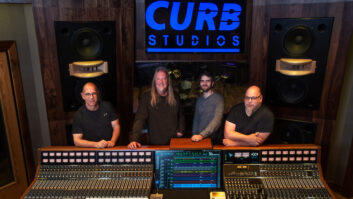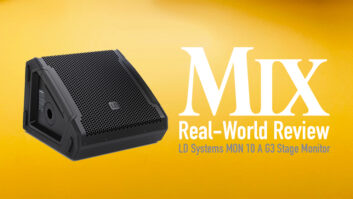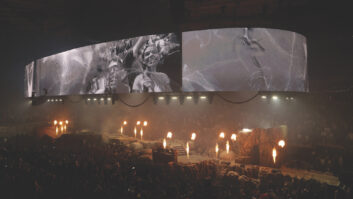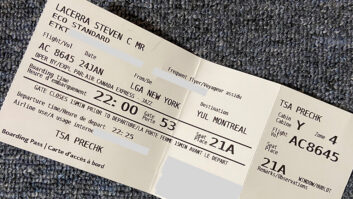New York has always been famous for its nightlife, but some of its best-known venues aren’t around anymore—CBGB’s, Max’s Kansas City, The Ritz, Tramps, Wetlands and The Bottom Line are just some of the now-departed clubs that launched a thousand bands. As a look back, we present an article about The Bottom Line on its 25th Anniversary from Pro Sound News in 1999. Sadly, the venue closed in January, 2004 after a rent battle with its landlord, New York University. The club’s owners remain determined reopen in a new space, but today, the former venue now houses classrooms.

New York—”We’ve been here for 25 years,” reflects Allan Pepper, co-owner of the Bottom Line with longtime friend and business partner Stanley Snadowski. “And from day one, we wanted to be eclectic musically. We’ve had everybody from Miles Davis to Bruce Springsteen to Dolly Parton to Billy Joel to Barry Manilow to Elvis Costello to Prince to Dar Williams, Allison Krause to Mingus, Richard Thompson, George Jones, Aaron Copeland–we’ve been all over the place. And, the list goes on and on.”
Quite a roster. But this West Village locale wasn’t always home to such a diverse and distinguished group of artists. Formerly a Dixieland jazz joint/college hangout called the Red Garter–complete with sawdust and peanut shell-covered floors and a flatbed pickup bed for the stage–the Bottom Line evolved from Pepper’s concept to a reality, opening its doors February 12th, 1974 .
“I discovered Allan Freed on the radio and it changed my life forever,” laughs Pepper. “I guess I was in junior high. I am very entrepreneurial by nature and so I started to amass a very large record collection. By 17, I was getting bored, all the music started sounding the same to me. A piano player turned me onto jazz. As nuts as I was about rock, I channeled all of my energy into jazz and recycled my record collection. I would read magazines like Metronome and Downbeat, interviews with musicians about how they were ripped off, how jazz was America’s only true cultural art form, and how no one took it seriously. I wanted to change things. So we started a non-profit accepting corporation called Jazz Interactions. One of the first things that we did under the umbrella was to produce a series of jazz jam sessions and concerts on a weekly basis. This went on for 4-5 years every Sunday, and we only canceled on 2 occasions—when Martin Luther King and Bobby Kennedy were killed.”
“I was living with my parents and my mother would say, ‘There’s a Freddy Hubbard on the telephone…’ And my heart would stop because I had all his records. And he was calling me because I was booking the shows. At first, we weren’t paying a lot—$25 for each sideman and $35 for the leader. They would play three sets and it would be from 4 to 9 pm.
“We got Mayor Linsey at that time to declare a jazz day in New York City, and got a grant from the New York State Council on the Arts to bring jazz programs into the public schools, to bring black articulate musicians into black neighborhoods to role models for the kids and into the white neighborhoods to expose kids to this type of music.”
By the late ’60s, the pair had left Jazz Interactions, were managing talent and had produced concerts and a series of records. “But the goal at that moment,” says Pepper “was trying to get our own place.”
Necessity being the mother of invention, the Bottom Line grew out of the need for venues where the music—and the musicians—would be respected, and compensated. While Pepper and Snadowski hosted these shows in venues around town from the Village Gate to Town Hall and even at the Red Garter, the Red Garter lease eventually came available. They were poised and positioned to take over the spot.
In February of 1999, celebrating its silver anniversary, the venue hosted a month-long schedule of stellar and special shows. They even asked performers from the past to come back—including David Bromberg, who’d been in retirement for years.
“I take a lot of pride in the shows that I put together,” says Pepper. “Obviously, you make a lot of mistakes along the way. I am very conscientious of packaging and there is lots of times when I have misjudged and guessed wrong and I am personally embarrassed by stuff like that. I feel like I haven’t done my job right. But, there’s been so many magic moments…
“We’ve been linked with Springsteen, that’s one of the things we’re most known for. The reason is because the second time he played here (he’s played a total of 3 times) was the beginning of the “Born to Run” tour. And that week-long engagement was really helpful in breaking him, and as a result, he got the cover of Time and Newsweek simultaneously. A lot of people were believers and a lot of people thought it was hype, and it allowed people to come in and see him and it was magical, wonderful, and a great night.
The Bottom Line is a New York institution, in a town where the competition is fierce and everybody’s a critic. “We been here consistently providing a stage for people,” Pepper concludes. “As somebody said the other day, a lot of people owe their—careers is too strong a statement—but to an extent a start; provided that stage that would allow people to see them so they could go to the next step. My greatest joy is when you fall in love with somebody whose an opening act and you nurture them and they work their way up to headlining. I was the kid who’d listen to all of these R&B stations and I was the kid that hunted those records down. So today, many years later, I’m still that kid because I’m still presenting music I enjoy to people and still that kid turning people onto music. I’m a fan.”
The Bottom Line
VITAL STATS
The Bottom Line
15 West 4th Street, New York, NY
FOH Console:
Mackie 40•8 with mute master
Monitor Console:
Soundtracs 2×10
House Speakers:
Custom Chaos Audio enclosures, JBL-loaded (15″, 10″, 2″)
Monitor Speakers:
(4) Turbosound floor-type 2×12 with horns
FOH Equipment:
(2) Yamaha REV7; DigiTech delay; (2) Alesis 3630; (2) dbx 160x; Klark-Teknik EQ
Microphones:
(8) Shure SM58, (5) SM57, (2) SM81; (4) Beyer 700, (1)M88; (2) Electro-Voice 308, (2) 408; (3) Sennheiser MD421
Direct Boxes:
(5) Gaines; (1) Countryman; (2) Whirlwind
